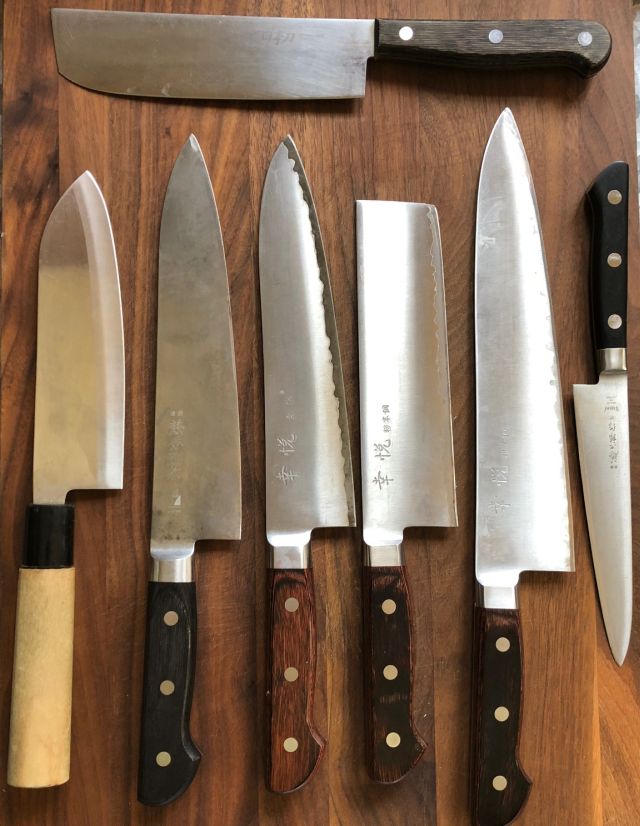
Looking for last-minute ideas for a favorite cook? That may entail gifting yourself (!), a friend, or family member. This year, I found myself obsessing about certain kitchen tools and cooking appliances. Maybe it was an escape from the political roller coaster that we’ve all been on -- no matter what your affiliation or inclination is, but exploring and using these culinary tools brought joy into my life. Maybe they’ll do the same for you, too!
Obsession 1: Japanese Knives
I’d had a Japanese knife obsession for decades and wrote about their merits in my December 2017 column at Cooking Light magazine. You can shop by price, type of knife, and steel. Japanese knives are light and fabricated to be super sharp and easy to maintain. There are 3 kinds in my kitchen that regularly use:
Petty (utility) - Is a small, handy knife that’s great for quick, small tasks. I use it for things like chopping apple for my morning muesli, cutting orange supremes for salads like this one, and deveining shrimp. Mine is a Tojiro DP (above, upside down on the far right), made of VG-10 stainless steel (great value, good edge retention and resists corrosion). I ordered it from Amazon. Yes, you’re supposed to hold on to a knife before buying, but I’d bought many knives that I’d held on to but when I went home to use them, I wasn’t so happy.
The Tojiro DP’s Rockwell Hardness level (RHc) is +/- 60, which means it’s a decent, durable steel that keeps it sharpness well. RHc is one of the geeky measures I use to select my Japanese knives. (A more thorough explanation of Rockwell Hardness can be found at KnifeArt.com. )
Gyuto (gyutou) - Many people think of Japanese knives as being mainly the santoku, but I’d long been frustrated with its shortish blade. Lurking on Chefknifestogo.com (CKTG), I learned about other Japanese multi-purpose knife options – mainly the chef’s knife called a gyuto (gyutou), which means "cow sword". It's made with Japanese knife craftsmanship (seeded by samurai swordsmiths) but with the shape more like a traditional western chef's knife. I own 3 gyuto knives, each with different kinds of steel.
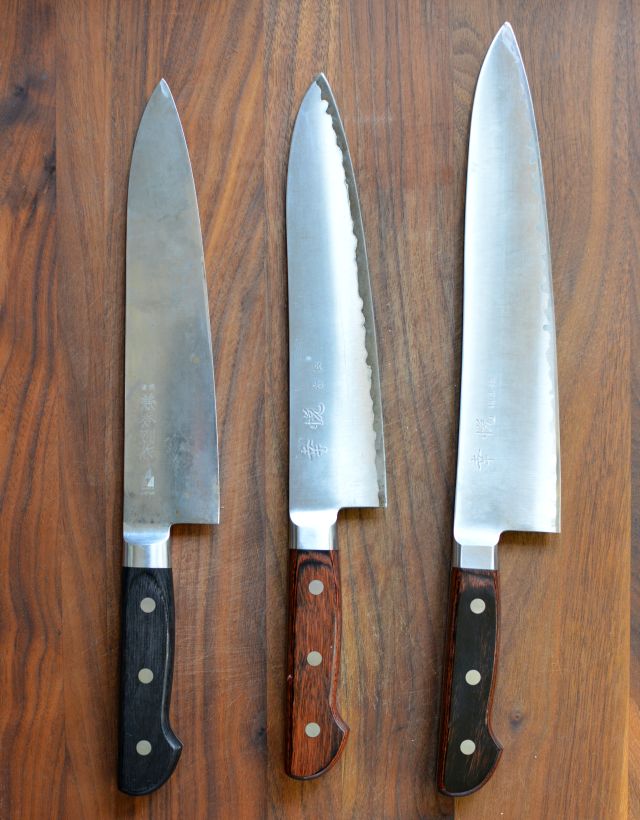
On the far left is the Kanahide TK gyuto 210 mm (8.2 inches long) made of semi-stainless steel, a great value steel that gets a little spotty and stained over time. That’s just cosmetic. It does not keep its edge as well as the stainless steel-clad carbon steel knife in the middle, the Kohetsu Gyuto Super Aogami 210 mm. The exposed edge of carbon steel darkens and ages beautifully over time. I tried that steel because the RHc was 64. The semi-stainless came in at about 61 on the RHc scale. You can see where I’m going here...
At the far right is my favorite gyuto, made of HAP40, a fine-grained steel made by Hitachi. CKTG touted the steel as potentially one of the best around, being super tough, pretty resistant to chipping and easy to sharpen. The Kohetsu Gyuto HAP40 240mm has an RHc of 65 to 66. The knife itself feels like an extension of my hand.
With the HAP40 blade, I chop like a crazy fool and zip through prep. The long, super sharp blade gives me greater leverage for chopping, mincing and mashing. What’s more, the HAP40 steel never stained or aged like the Aogami Super Steel or TK semi-stainless steel. I felt that I'd found the steel of my dreams.
Nakiri - This cleaver-like knife with a straight edge is considered a home cook’s vegetable knife but it does pro-level work on the cutting board. This one below, also by Kohetsu and made of HAP40 steel, enables beautiful, slender, matchsticks, thin slices of potatoes for au gratin dishes for (forget a mandoline!), and perfect dice. How do I get super thin slices of onion for pho? The nakiri you see here:
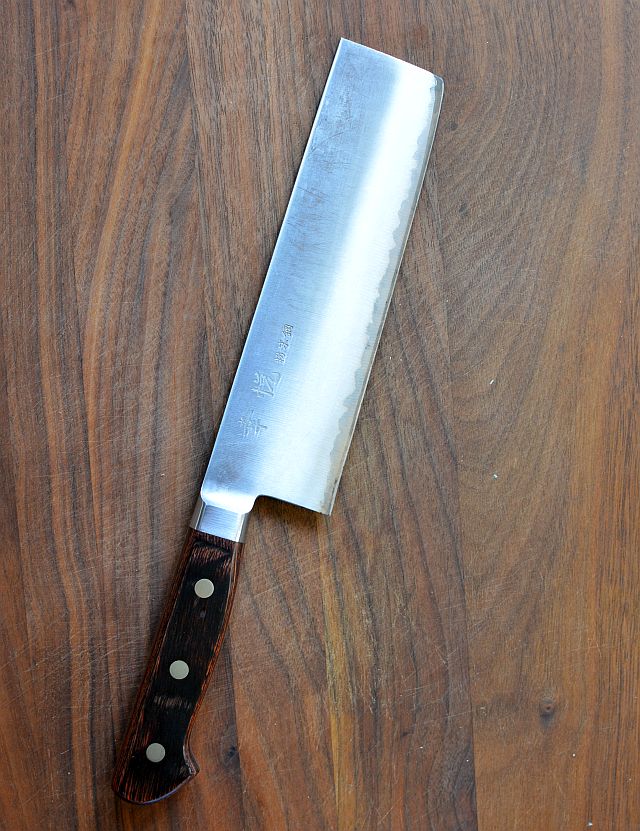
You do not have to get my exact knives. I use them as examples to illustrate the differences between steels. I spend a lot of time reading about artisanal knife makers in Japan. I stare at knife photos online and consider technical details. It's an unusual interest.
What I suggest to you when you're shopping for kitchen knives, is to do consider Japanese-style knives. Study up on steel types, RHcs, and knife types at sites like Chefs Knives To Go and Knife Wear. Shop there or other places like Chubo, MTC Kitchen, Sur la Table, Williams Sonoma and even Amazon, which carries excellent Kazan HAP40 knives (sold by Chubo) and excellent MAC Knives (VG-10). MAC, along with Misono, Miyabi, and Shun are well-regarded, reliable Japanese knife brands that are also well distributed. Look around, read reviews, examine the specs. Be a sharp knife consumer. Here are my tips for sharpening and maintaining all knives.
Gift giving tip: As with other cultures, when a Vietnamese person gifts you a knife, there needs to be an exchange of money. In Western traditions, you tape a penny to the box so the recipient may give it back as if he/she purchased the knife. In my family, the recipient hands over a dollar. If there's no money exchanged, the knife gift may signal ill will or the severing of a relationship.
Obsession 2: Carbon Steel Skillets
I’ve written about these skillets before (they’re naturally nonstick and a lighter alternative to cast iron), but Bobbie emailed about how to choose one. Here’s how I go about deciding on what to buy:
- Size you would use most: What do I want to use the pan for?
- Thickness of the metal: Thicker means better heat conduction, no potential warping.
- Weight of the pan: When I'm older, will I be able to pick up the pan easily to maneuver it around the stove, and from stove to sink?
- Shape of the pan, including the handle: Do I want to pick it up easily and toss stuff around while cooking?
I bought the Mauviel M'Steel 11-inch skillet sight unseen because it's got a thick carbon steel surface, was just enough weight for me to handle, and its size was in between medium (10 inch) and large (12 inch). It was a Goldilocks decision. I also have an 8-inch Mauviel M'Steel for small jobs like frying a single egg or making a one-person omelet; it's a good size and price for a gateway carbon steel skillet.
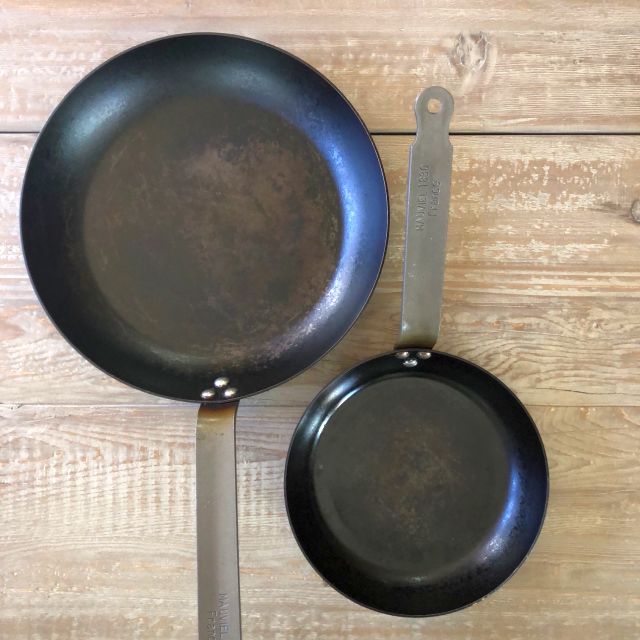
Out of curiosity, I bought a Lodge 10-inch carbon steel pan; it was pre-seasoned (convenient) and affordable. But the shape of the pan (the sides were relatively low and made me feel like I couldn't toss stuff around easily) and the handle was not ergonomic to hold. The handle also got hot very easily. The Lodge carbon-steel pans are thinner than the Mauviel so that explains the price difference.
Right now, I'm considering getting a 12 or 14 inch carbon steel skillet. The weight is what gets me. For that reason, I'm thinking of buying one with a helper handle so I can move the pan. Mauviel M'Steel does not come with helper handles. However, DeBuyer -- another reliable brand does have helper handles.
If Williams Sonoma or Sur La Table -- or a similar kind of cookware shop is near you, call them to see if they carry DeBuyer, Mauviel or Matfler (another good brand). Then you can hold one and see.
Notes: For tips on seasoning carbon steel pans and woks, see this post.
Obsession 3: Electric Multicookers
This was the year that I fell for the Instant Pot but there’s another multicooker out there that you should consider: the Fagor Lux. It’s a little costlier but I’ve been using it for the past month and really like it. Its construction is a bit sturdier than that of the Instant Pot. The Fagor's inner pot (the one you cook in) is ceramic coated for a good nonstick surface that stays very hot.
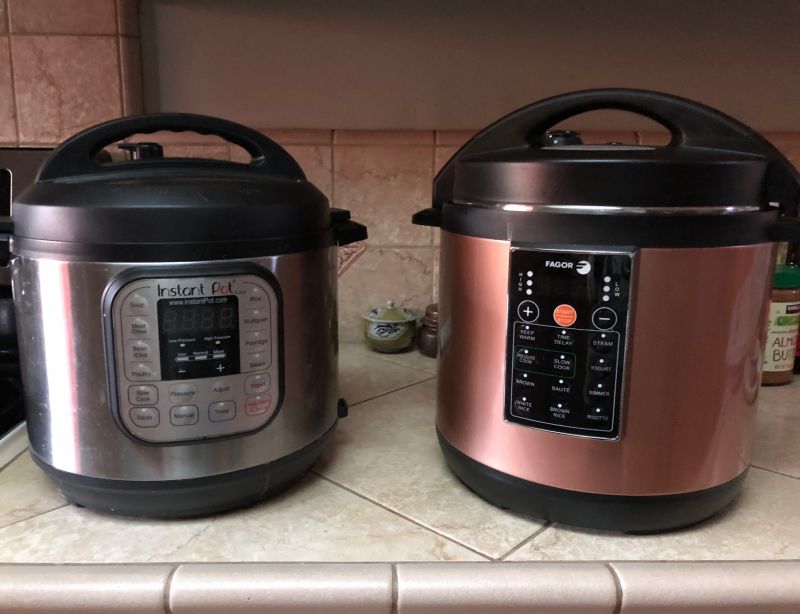
The Fagor Lux makes perfect rice without you having to manipulate things like I’ve done with the Instant Pot’s pressure release valve. I just put white or brown jasmine in the pot with water (1 cup white jasmine rice to 1 cup less 1 tablespoon water; 1 cup brown jasmine rice to 1 cup plus 1 tablespoon water) and cook on the regular rice button for 10 minutes (white rice) or 12 minutes (brown jasmine). My favorite brands of jasmine rice are: Three Ladies, Golden Star, Dynasty and Lotus Foods.
With yogurt making, there’s usually milk stuck to the bottom of the pot but with the Fagor, it can loosen and be removed from the inner pot during the milk heating process. The pot is also easy to clean with a soft sponge. And if looks are your thing, the Fagor comes in various swanky colors (white, stainless steel, champagne and copper). The price varies on the color and does not reflect performance. Fagor has been making pressure cookers for a long time so they’re trustworthy, not just good looking.
Both machines are very good. The Fagor Lux just seems a little better.
Notes: Whatever the Instant Pot, the Fagor can do, too! They’re both multicookers so feel free to glean tips and recipes from these VWK posts:
- Instant Pot Pho (blueprint)
- Instant Pho Chicken Pho recipe
- Perfect Rice in the Instant Pot (blueprint)
- Instant Pot Vietnamese Yogurt
- Turkey Pho (for the pressure cooker with multicooker instructions!)
Obsession 4: Coconut Fiber Vegetable Brush
I cook with a lot of locally grown, organic vegetables and often leave the skin on. Just because something is organic doesn’t mean you can eat it as is. It needs to be washed! But with root vegetables, rinsing isn’t enough. A little scrubbing can clean and produce a fresher (less dirt-like) flavor.
I recently found this natural bristle vegetable scrubbie that’s very effective. It’s made of coconut fiber by Burstenhaus Redecker, a German company known for excellent brush making. This vegetable brush is the best I've used. It's efficient and effective. It's bulky, but I keep it near my sink where it dries easily, too.
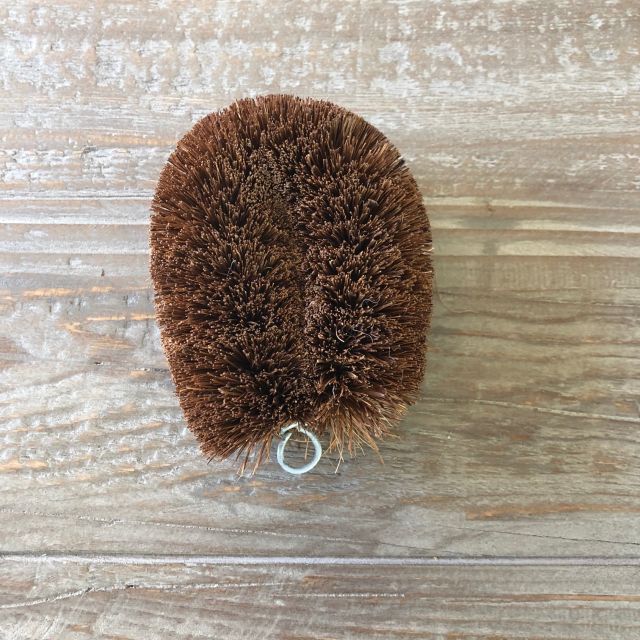
BR makes other vegetable brushes, like this one that handles soft (mushrooms) and hard (carrot) vegetables. It's a company that's been making practical, natural brushes since 1935.
Obsession 5: Lithuanian Linen Dishtowels
How weird can I get? These are the bomb! They’re super thirsty and get softer and thirstier over time. They dry very fast, do not get musty as they sit in the kitchen, and are eco-friendly. Yes, they cost more than most kitchen dishtowels but linen lasts for a very long time. I spend a lot of time in my kitchen and these dishtowels are wonderful, small luxury. I actually look forward to drying dishes, which I can't believe I just typed.
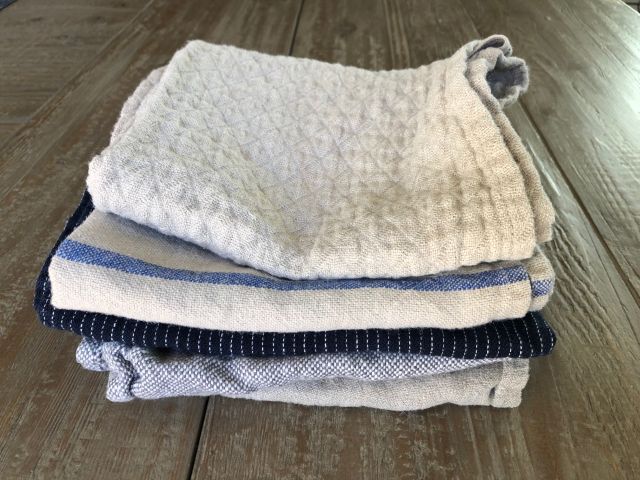
I’ve tried three sources -- Emory James (on Etsy), Fog Linen, and Good Linens. The Good Linen towels are the standout because after washing, they keep their neatish look and don’t look bulky and unkept. They retain a certain rustic elegance and are superb workhorses in their ability to suck up moisture. I also have a quilt-finished washcloth from Good Linens that’s a great for exfoliation in the shower.
Fog Linen offers towels in many colors and patterns but I keep wanting to iron them, though I’m too lazy to iron dishtowels. I purchased the thick dish towels, assuming they were thirstier. They’re very cool looking in a Japanese way, however.
Emory James is more affordable and from nice lady in Ohio. The towels fold nicely and are thinner than ones from Good Linens and Fog Linen. They took a while to soften but have a certain old fashioned quality.
I hope these ideas inspire you in some way. My husband is the one who said, “Why don’t you tell people what you’ve been bugging me about all year long?” Well, that’s it for now.
What kitchen tools or appliances have you gotten into this year? Let us all know!
















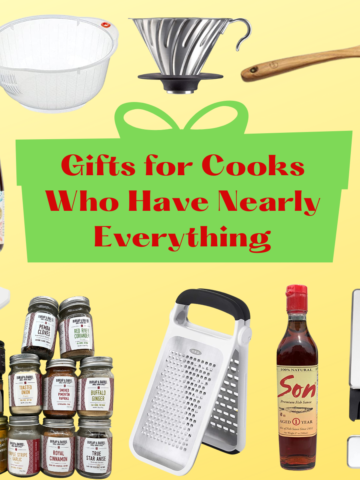
Kelly says
Curse you, I am going to buy everything here!
Andrea Nguyen says
Ha! I didn't mean to make you do it! Shop 'till you drop, GF.
Jorgebob says
The vegetable brush looks like a Japanese tawashi. Daiso sells small versions, too.
Andrea Nguyen says
It does! It is! Thanks for the Daiso tip. I love the fact that they're inexpensive and efficient.
EL Mehdi says
Nakiri knives are my favorite. totally deserve to be number 1 gift <3